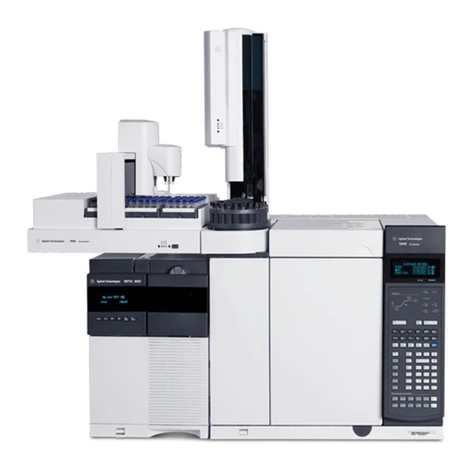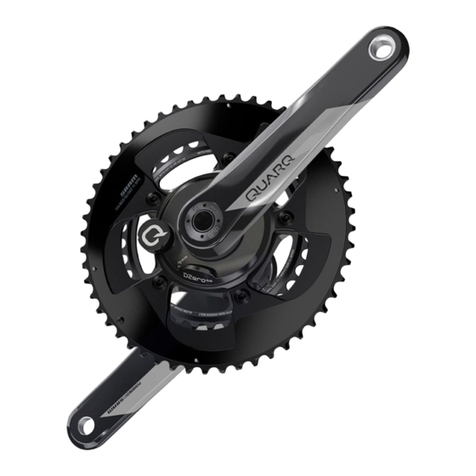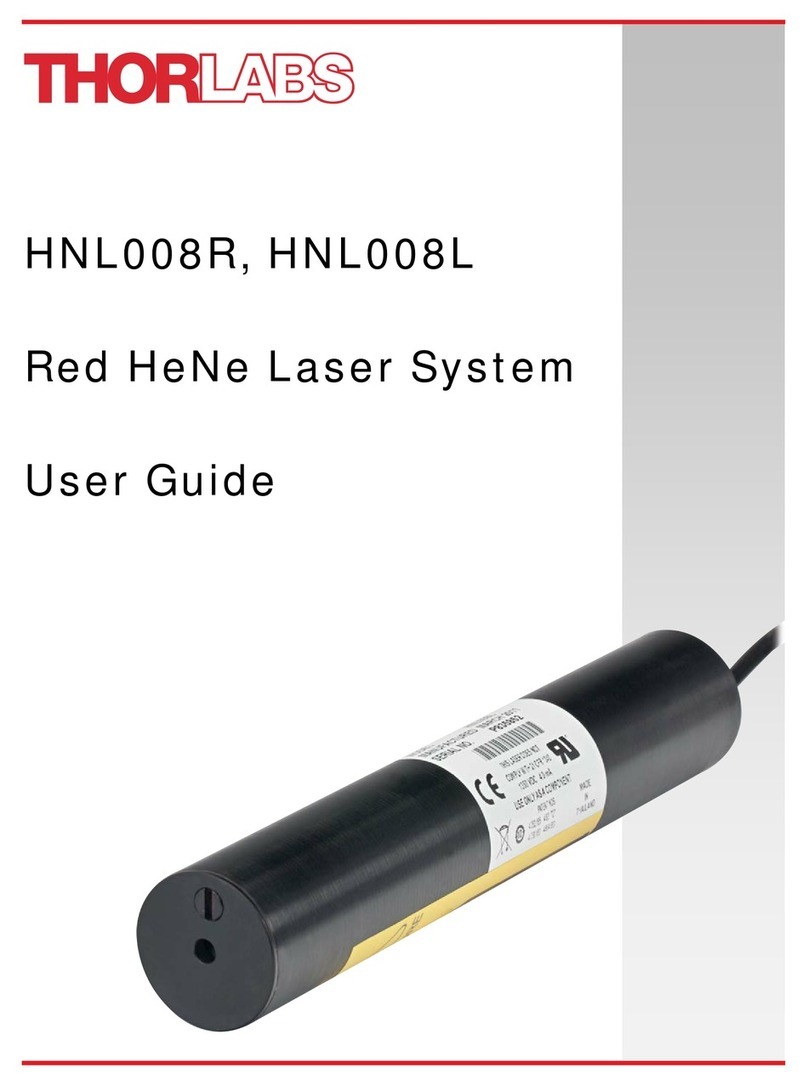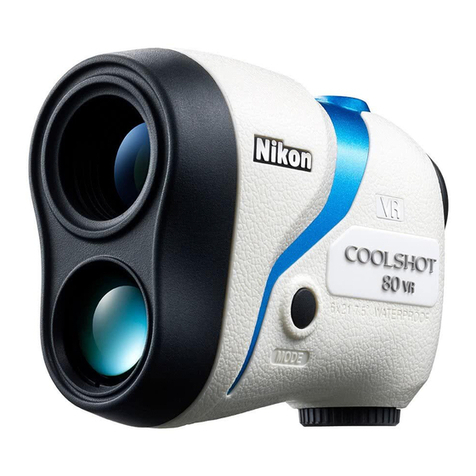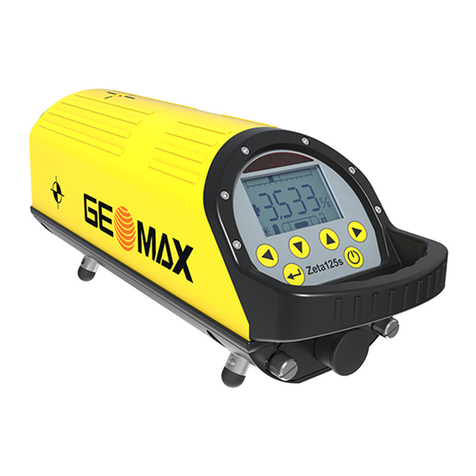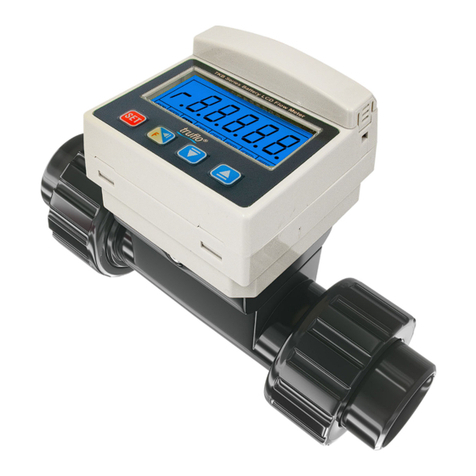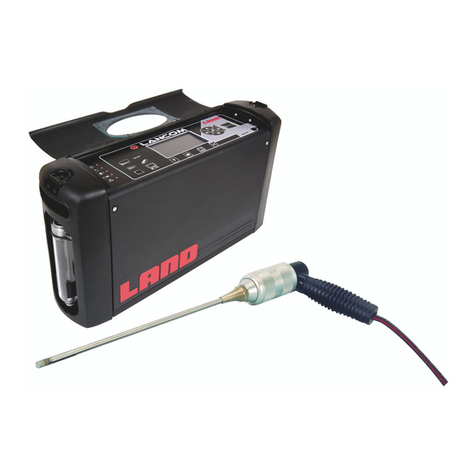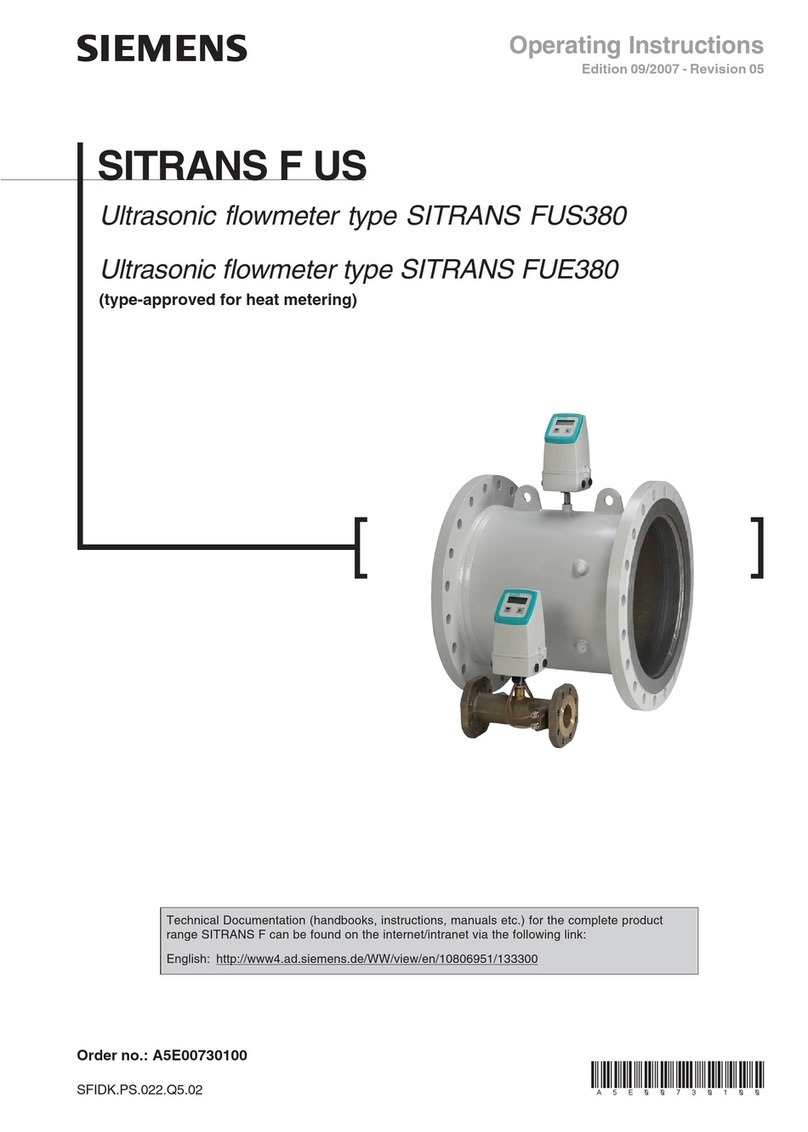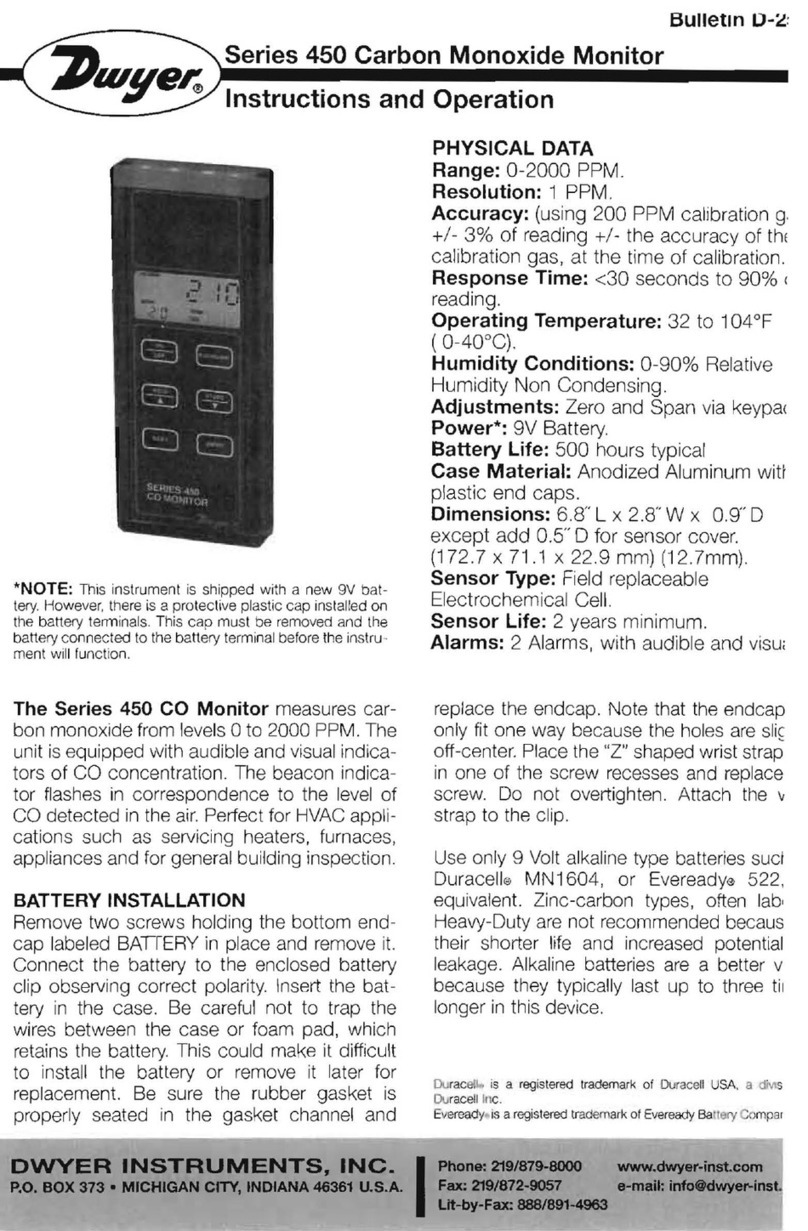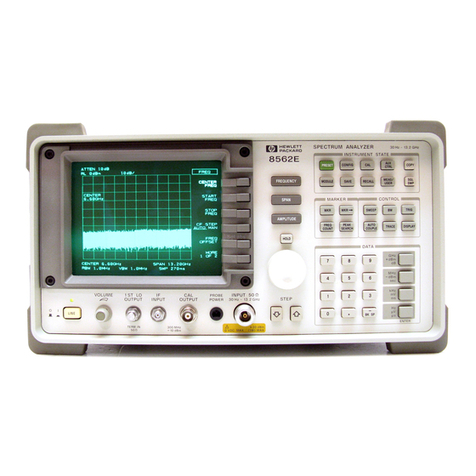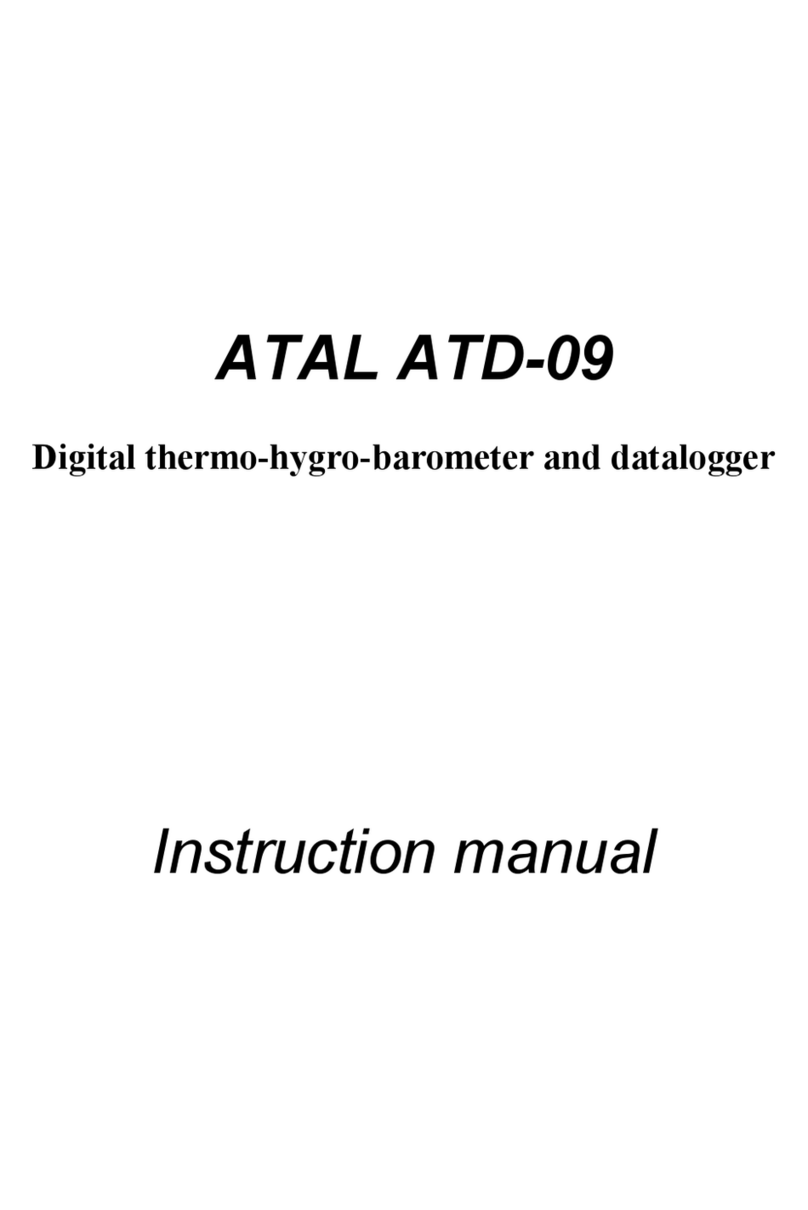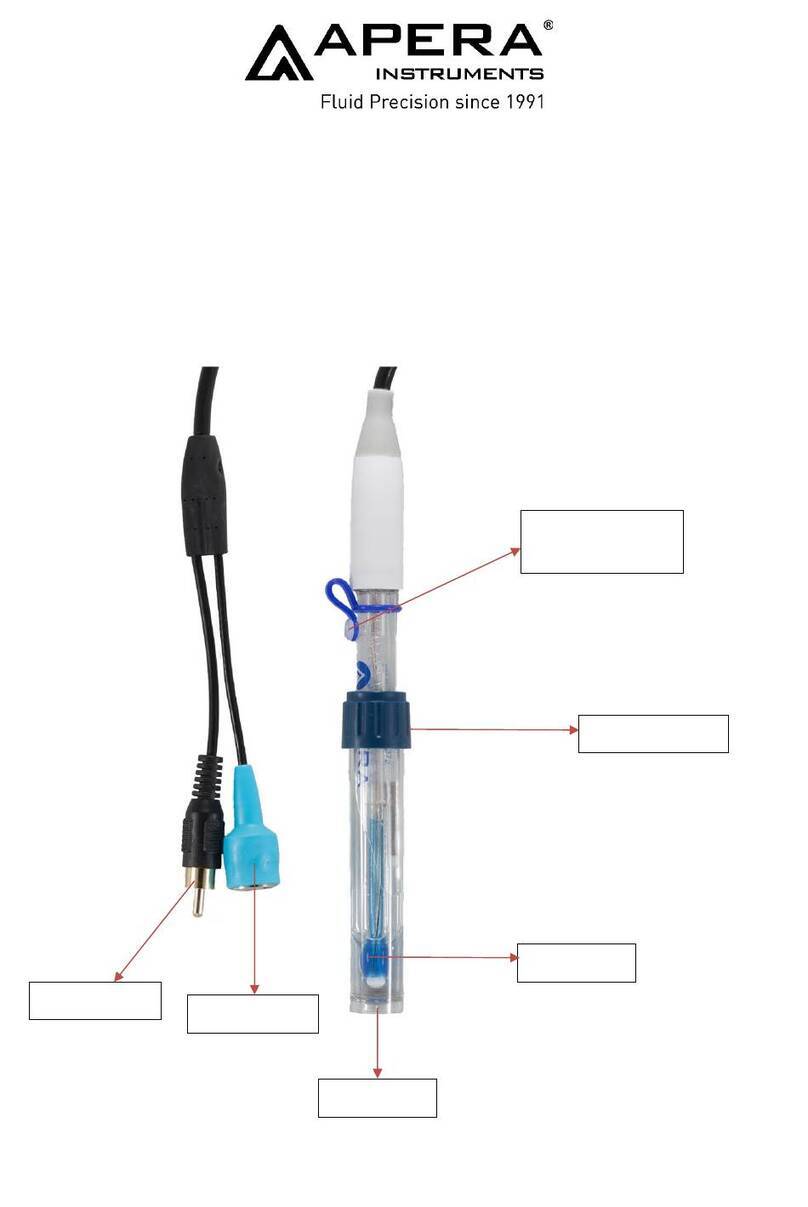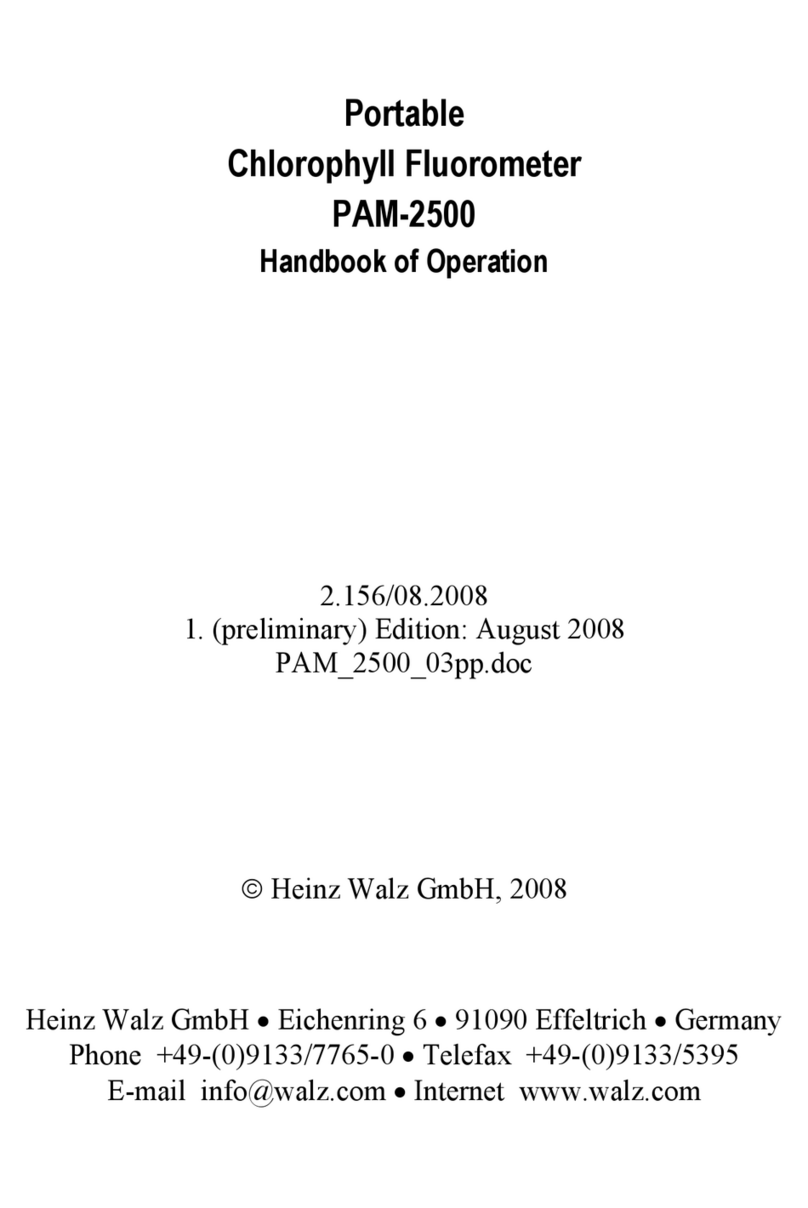Tempsens CALsys 1500 User manual

Temperature
Calibrator
(CALsys 1500)
User's Guide
TEMPSENS INSTRUMENTS (l) PVT. LTD. UNIT ll
A-190, Road No.5, M.I.A., Udaipur-313003 INDIA
Ph. : +91-294-3500600,
Fax : +91-294-3500631
Email : tech@tempsens.com
Web : www.tempsens.com

Page | 1
Legal Disclaimer
The information contained in this document is the property of TEMPSENS.
TEMSPENS reserves the right to make changes to this document and to the product described herein
without notice. Before installing and using the product, review the latest version of the applicable
documentation, which are available from the Tempsens website at:
http://www.tempsens.com/
© 2021 Tempsens Instrument Pvt. Ltd. All Rights Reserved.
Document Information
Name
Temperature Calibrator (CALsys 1500) User Manual
Document Version
1.0
Document Code
TS.CS.005
Publish Date
Tuesday, January 4, 2022

Page | 2
Preface......................................................................................................................................... 5
Safety Information.................................................................................................................. 5
Electrical Safety....................................................................................................................... 6
Health and Safety Instructions................................................................................................ 7
Cautions and Preventions....................................................................................................... 8
Document Conventions........................................................................................................... 8
Chapter 1
Introduction................................................................................................................................. 9
1.1 About CALsys 1500.................................................................................................................. 9
1.2 Basic Working Model of CALsys 1500...................................................................................... 10
1.3 Physical Measurements.......................................................................................................... 11
1.4 Wiring Diagram....................................................................................................................... 12
1.5 Technical Specifications........................................................................................................... 13
1.6 Technical Specifications........................................................................................................... 14
Chapter 2
Installation of CALsys 1500............................................................................................................ 18
2.1 Installation.............................................................................................................................. 18
2.2 Earthing................................................................................................................................... 23
2.3 Heater Connection.................................................................................................................. 24
2.4 Internal Structure.................................................................................................................... 24
Chapter 3
Operating CALsys 1500.................................................................................................................. 25
3.1 Turning On the Unit................................................................................................................. 25
3.2 Heating Up the Source............................................................................................................ 26
3.3 Operating Instructions............................................................................................................ 26
3.4 Cooling Down the Source .......................................................................................................27
Table of Contents

Page | 3
Chapter 4
Operating Unit Controller.............................................................................................................. 28
4.1 Front Panel Layout.................................................................................................................. 28
4.2 The temperature Controller.................................................................................................... 28
4.3 Altering the Set Point ............................................................................................................. 28
4.4 Monitoring the Controller Status ........................................................................................... 28
4.5 Temperature Units ................................................................................................................. 28
Chapter 5
Digital Communication................................................................................................................. 29
5.1 Digital Communications Wiring............................................................................................... 29
5.2 Digital Communications Parameters....................................................................................... 30
Chapter 6
Software Installation..................................................................................................................... 31
6.1 Installation.............................................................................................................................. 31
6.2 Parameters on main screen.................................................................................................... 31
Chapter 7
Service & Maintenance................................................................................................................. 33
7.1 Routine Service....................................................................................................................... 33
7.2 Replace the Controlling Sensor............................................................................................... 33
7.3 Replace Solid State Relay......................................................................................................... 33
Chapter 8
Troubleshooting CALsys 1500........................................................................................................ 35
8.1 CALsys 1500 unit does not turn on......................................................................................... 35
8.2 CALsys 1500 unit is not stable................................................................................................. 35
8.3 The temperature of the calibrator does not rise..................................................................... 35
Appendix A : Calibration Services ................................................................................................. 36
In House Calibration Facility.................................................................................................... 36

Temperature Calibrator (CALsys 1500)
User's Guide
Page | 4
On-site Calibration Facility...................................................................................................... 36
Fixed-Point Calibration Facility................................................................................................ 36
Appendix B : Warranty ................................................................................................................. 37
Limit of Liability....................................................................................................................... 37
Caution in Using the Product.................................................................................................. 37

Page | 5
Preface
Welcome to the Temperature Calibrator (CALsys 1500) user guide. This guide provides detailed information
about all the product options and features, and explains how to use the product and configure basic settings
to suit your requirements.
This user manual contains information about the product and its proper use and should be kept in a place
where it will be easy to access. This user manual also provides safety precautions in using this product.
Safety Information
This chapter contains important information for the safety. If the instructions contained are not followed
properly, particularly the safety guidelines, it could result in serious personal injury or can cause serious
damage to the unit and to the components of system it is connected to. Use the instrument only as specified
in this manual. Otherwise, the protection provided by the instrument may be impaired.
Refer to the safety information below and throughout the manual.
In order to assure the device operates safely, the operator needs to act effectively and be conscious of safety
problems.
The terms “Warning” and “Caution” have the following definition:
l"Warning" indicates conditions or behaviors that could endanger the user.
l"Caution" denotes situations or behaviors that may endanger the instrument in use.
The following safety symbols may appear on CALsys 1500 unit:
SYMBOL
DESCRIPTION
SYMBOL
DESCRIPTION
Risk of Danger. Important
information. See Manual
Hazardous voltage. Risk of electric shock
Caution, Hot Surface
Protective Earth Ground

Temperature Calibrator (CALsys 1500)
User's Guide
Page | 6
Electrical Safety
lBefore using this equipment, make sure it is properly grounded. Make sure the ground conductor
wire (colored green/yellow) in the main power cable is connected to a protective earth/ground. If
the equipment is not properly grounded, the high voltage may flow through the equipment body
(chassis). If safety procedures are not followed, SEVERE INJURY OR DEATH may occur.
lDo not remove the panels from the equipment without proper safety measures to avoid internal
main power supply voltage hazard.
WARNING:
Follow these precautions to avoid electric shock or personal injury:
This equipment uses protective earth circuit to ensure that the conductive parts do not store electric
charges or conduct electricity if insulation fails
lBefore connecting the equipment to the electricity supply, understand the parts of the calibrator with
the help of operating manual.
lUse power cables only with appropriate voltage and power rating, and that are approved for usage in
your country.
lReplace the main power cable if the insulation is damaged, or if the insulation shows signs of wear and
tear.
lDO NOT put the product at the location where access to the main power is blocked.
lDO NOT use an extension cord or adapter plug.
lDO NOT use the product if it operates incorrectly.
lMake sure the power cord does not touch the hot parts of the product.

Preface
Page | 7
Health and Safety Instructions
WARNING: BURN HAZARD - DO NOT touch the well access surface of the unit at high temperature
To avoid possible health and safety concerns, follow these guidelines.
lWear appropriate protective clothing before using the equipment.
lOperators of this equipment should be adequately trained in the handling of hot and cold items and
liquids.
lDo not use the apparatus for jobs other than those for which it was designed, that is, the calibration of
thermometers.
lDo not handle the apparatus when it is hot (or cold), without wearing the appropriate protective
clothing and having the necessary training.
lDo not drill, modify or otherwise change the shape of the apparatus.
lDo not use the apparatus outside its recommended temperature range.
lAfter use, do not return the apparatus to its carrying case until the unit has cooled down.
lThere are no user serviceable parts inside. When required, contact Tempsens agent for repair.
lEnsure all materials, especially flammable materials are kept away from the hot parts of the apparatus,
to prevent fire risk.
lDo not use the product around explosive gas, vapor, or in damp or wet environments.
lMake sure that the space around the product meets minimum space requirements.
lDO NOT turn off the unit at temperatures higher than 350°C. This could create a hazardous situation.
Select a set-point less than 100°C and allow the unit to cool before turning it off.
lThe top sheet metal of the furnace may exhibit extreme temperatures for areas close to the well
access.
lMaterials used in this furnace may be irritating to skin, eyes, and respiratory tract. Consult the material
manufacturer's Material Safety Data Sheet (MSDS) to learn about those materials before using.

Temperature Calibrator (CALsys 1500)
User's Guide
Page | 8
Cautions and Preventions
To avoid possible damage to the instrument, follow these guidelines:
lBefore working inside the equipment, turn the power off and disconnect the power cord.
lDO NOT turn the unit upside down with the inserts in place; the inserts will fall out of the unit.
lUse of this instrument at HIGH TEMPERATURES for extended periods of time requires caution.
lCompletely unattended high temperature operation is not recommended for safety reasons.
lDO NOT plug the unit into 230 V if the heater switches and fuse holder reads 115 V. This action will
cause the fuses to blow and may damage the instrument.
lComponents and heater lifetime can be shortened by continuous high temperature operation.
lDO NOT use fluids to clean out the well.
lNever introduce foreign material into the probe hole of the insert. Fluids and other materials can leak
into the calibrator causing damage.
lDO NOT drop or force the probe stems into the well. This type of action can cause a shock to the sensor
and affect the calibration.
Document Conventions
The documentation uses the following conventions.
Note:
Configuration notes
Tip:
Recommendations or suggestions
Important:
Information regarding required or default configuration settings and product
limitations
WARNING:
Critical actions and configuration options
WARNING:

Page | 9
Chapter 1
Introduction
The 'CALsys 1500' has been designed to provide stable and accurate temperature to enable professionals to
calibrate Temperature Sensing Devices by comparison method. The 'CALsys 1500' model has been designed
to be rugged and easily maintained. This model provides an isothermal enclosure (ceramic block) in which
the thermocouple/RTD/Pyrometer can be calibrated against the temperature of the calibrator. For
traceable calibration a master calibration sensor should be placed into the metal block alongside the unit
under calibration.
The method is widely accepted because the calibrator provides very stable temperature nearing to its
controlled point, the Master Thermocouple, which is calibrated by independent Laboratory traceable to
National standards, compares the sensor under calibration.
The 'CALsys' models are part of wide range of Laboratory calibrators designed and made by us. Please
contact us in case you required more information about our other products.
1.1 About CALsys 1500
Back View Front View
Power is present even if the front panel switch is in the OFF (0) position.
WARNING:

Temperature Calibrator (CALsys 1500)
User's Guide
Page | 10
'The calibrator controller uses a precision R type thermocouple as a controlling sensor and controls the well
temperature with 6 silicon carbide heater. To obtain and maintain a required temperature the controller
varies the power to the heater via solid-state relay. There is one electricity driven fan which is situated under
the heating chamber for cooling the heater. The CALsys 1500 calibrator was designed for laboratory,
moderate cost and ease of operation. With proper use the instrument should provide continued accurate
calibration of temperature sensors and devices.
1.2 Basic Working Model of CALsys 1500
lBefore using the equipment, read the safety guidelines and operating procedures of the calibrator as
described in the of this user manual.
lDo not insert impure materials, metal objects or probes etc. into the block.
Warning
The basic working model for CALsys 1500 is as follows:

Introduction
Page | 11
1.3 Physical Measurement
Front View
Back View

Temperature Calibrator (CALsys 1500)
User's Guide
Page | 12
1.4 Wiring Diagram
Refer to following figure for CALsys 1500 wiring diagram.

Introduction
Page | 13
1.5 Technical Specification
CALsys 1500BB has the following technical specifications:
PARAMETER
SPECIFICATION
Voltage
230 V AC±10
Power
3 KW
Supply Frequency
50/60 Hz
Temperature Range
500°C to 1500°C
Resolution
0.1 °C (upto 999.9°C above 1.0°C)
Stability
±0.2°C at 500°C
±0.3°C at 1000°C
±0.5°C at 1500°C
Uniformity
±2.0°C
Cavity type
Silicon Carbide
External Aperture
40 mm dia
Cavity diameter
46 mm(85 mm depth)
Emissivity
0.98(±0.01)
Controlling sensor
Precision R type T\C
Time to reach max. temperature
2 hrs
Operating temperature
20 to 45 °C
Method of controlling
Digital self tuned PID controller
(Eurotherm P104 Controller)
Computer interface
RS-232
Dimensions
590(H) x 450(W) x 530(D) mm
Cavity
Diameter 37 x 245mm long (2 x 6 mm & 2 x 8mm)
Weight
Approximate 55 Kg

Introduction
1.5 Technical Specification
CALsys 1500L has the following technical specifications:
Uniformity
±0.6°C at 500°C
±0.8°C at 1000°C
±1.2°C at 1500°C
Controlling sensors R type duplex
Stabilization time 15 to 20 mins
Method of Control Self tunned PID controller
Heating time 2 Hrs
Resolution 1 °C
Display LCD, °C or °F user-selectable
Size (H x W x D) 590(H) x 450(W) x 530(D) mm
Weight 55Kg
Power requirements 230 VAC, 3.0 KW(50 Hz)
Computer interface Ethernet port (CALsys 1500L Autocal), RS - 232(CALsys 1500L)
Calibration Accredited calibration certificate provided
Environmental operating conditions 0 °C to 40 °C, 0 % to 90 % RH (non-condensing)
Specifications valid in environmental conditions 13 °C … 33 °C
PARAMETER SPECIFICATION
Page | 14

Chapter 2
Setting up CALsys 1500
Place the calibrator on a flat surface with at least 10 inches of free space around the instrument. Overhead
clearance is required.
DO NOT Place this unit under a cabinet or structure. Plug the power cord into a grounded mains outlet
located on the controlling unit rear panel. Observe that the nominal voltage corresponds to that indicated
in the in of this user's guide.Technical Specifications Chapter 1
2.1 Installation
Although the instrument has been designed for optimum durability and trouble-free operation, it must be
handled with care. The instrument should not be operated in an excessively dusty or dirty environment.
Refer to in this user's manual for routine service and cleaning Chapter 8, Service & Maintenance
recommendations.
The instrument operates safely under the following conditions:
lTemperature range: 5°C - 50°C (41°F - 122°F)
lAmbient relative humidity: 15 - 50%
lPressure: 75kPa - 106kPa
lMains voltage within ± 10% of nominal
lVibrations in the calibration environment should be minimized
lAltitude less than 2000 meters
2.2 Optimal Environmental Conditions
Page | 15

Setting up CALsys 1500
CALsys 1500 is packed in custom-designed packaging to send out your unit. Unpack the furnace carefully.
Inspect the unit after unpacking for any signs of damage, and confirm that your delivery is in accordance
with the packing note. If you find any damage to the unit or an item is missing, notify Tempsens
immediately.
The following accessories are included in the package:
2.3 Unpacking and Initial Inspection
CALsys 1500L/BB Heating Chamber Heaters Insulation Wool
Cavity RS-232 Optional Block
Bolts Collar Thermocouple
Clamps
lCALsys 1500L/BB
lHeating Chamber
lHeaters (Silicon Carbide)
lRS-232 Cable
lCeramic Cavity/optional block for dry block
lBolts
lCollar
lClamps
lManual
lCertificates
lInsulation Wool
lR Type master thermocouple
Page | 16

1. Please open the wooden box carefully and takeout the operating manual from the box and read
carefully.
2. Take out the temperature calibrator unit carefully and keep it at suitable place.
3. Install inner chamber as instructed in in of this user guide. Installation of CALsys 1500 Chapter -3
4. Connect the power plug to the mains.
5. Turn the switch ON, and observe the display on the controller. The display shows that the calibrator is
ready for use.
6. Keep the switch in the ON position
7. Ensure the ceramic insert/ceramic cavity is properly inserted in the calibrator.
2.5 Operating Instructions
lCeramic insert or ceramic cavity should be removed from the calibrator when it will reach ambient
temperature.
lUse either block or ceramic cavity (DO NOT use them together).
lAlways use safety gloves while handling the calibrator.
Note:
Ceramic Cavity for CALsys 1500BB Ceramic Block for CALsys 1500L
Page | 17

Chapter 3
Operating CALsys 1500
3.1 Turning ON the unit
Plug the CALsys 1500 power cord into mains outlet of the proper voltage, frequency and current capability.
Typically this will be (230 VAC±10, 50/60 Hz). Using the “ON/OFF” (for heater supply) switch located at front
side responsible for heating of furnace. The furnace will turn on and begin to heat the previously
programmed temperature set-point.
Earth
Neutral
Phase
Main Power Cable Connection
ON/OFF switch
for heater
Controller
Page | 25

Operating CALsys 1500
1. After the complete installation.
2. Connect the 'CALsys 1500' to a suitable power supply. ON the Mains switch located at back side with
power entry.
3. Set the desire temperature value in PID by using UP & Down key.
4. Aim the reference (Master) standard infrared temperature sensor to the target area.
5. PV (Present value) display in controller will gradually rise until it reaches the set point temperature. The
controller takes some time to reach the set-point depending on the span.
Furnace is stable when PV is equal to SV (Set Value).
6. Master sensor takes some time to reach the set point temperature and stable at temperature near
about controller set temperature.
3.3 Operating Instruction
3.2 Heating up the source
Press “UP” or “DOWN” key of controller to change the set-point value. When the set-point temperature is
changed the controller will switch the furnace heater on or off to raise or lower the temperature. The
displayed temperature will gradually change until it reaches the set-point temperature. The furnace may
require time to reach the set-point depending on the span. An another 25 to 30 minutes is required to
stabilize the furnace with ± 1.5°C of the set-point.
Important:
lAll other controller parameters are company set and locked. It is recommended not to change them.
lWhen the source is operated at any temperature above ambient, the front face and plate become hot.
lAlways put the fan in “ON” Condition and do not switch the “Mains” off Directly, First set the controller
to 0°C and then wait until the unit is not cooled below 350°C.
Measured Temperature
PAGE SCROLL DOWN UP
Required Temperature
Page | 26
Table of contents
Other Tempsens Measuring Instrument manuals
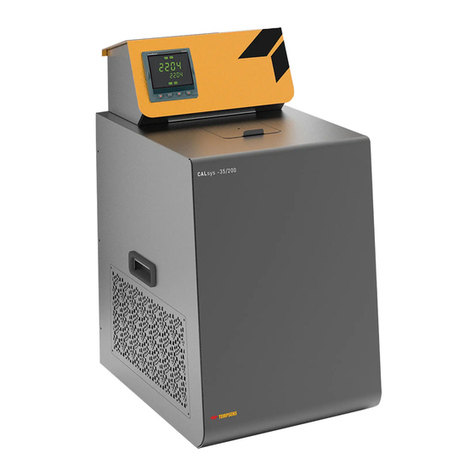
Tempsens
Tempsens CALsys -35/200 User manual
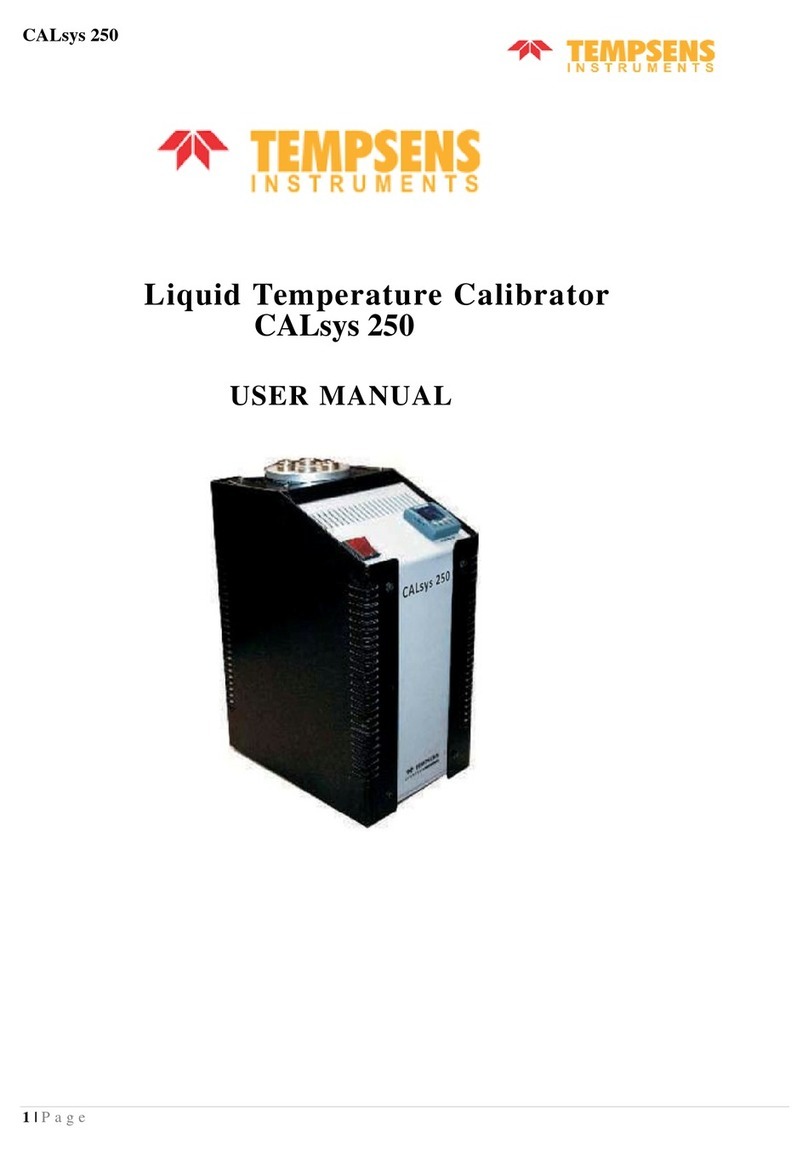
Tempsens
Tempsens CALsys 250 User manual

Tempsens
Tempsens CALsys-15/110 Autocal User manual
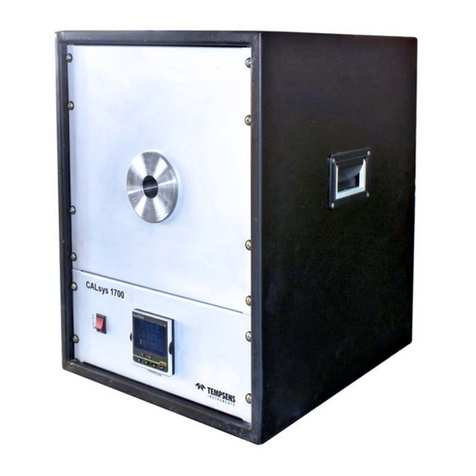
Tempsens
Tempsens CALsys 1700 User manual

Tempsens
Tempsens CALsys 1500 BB User manual
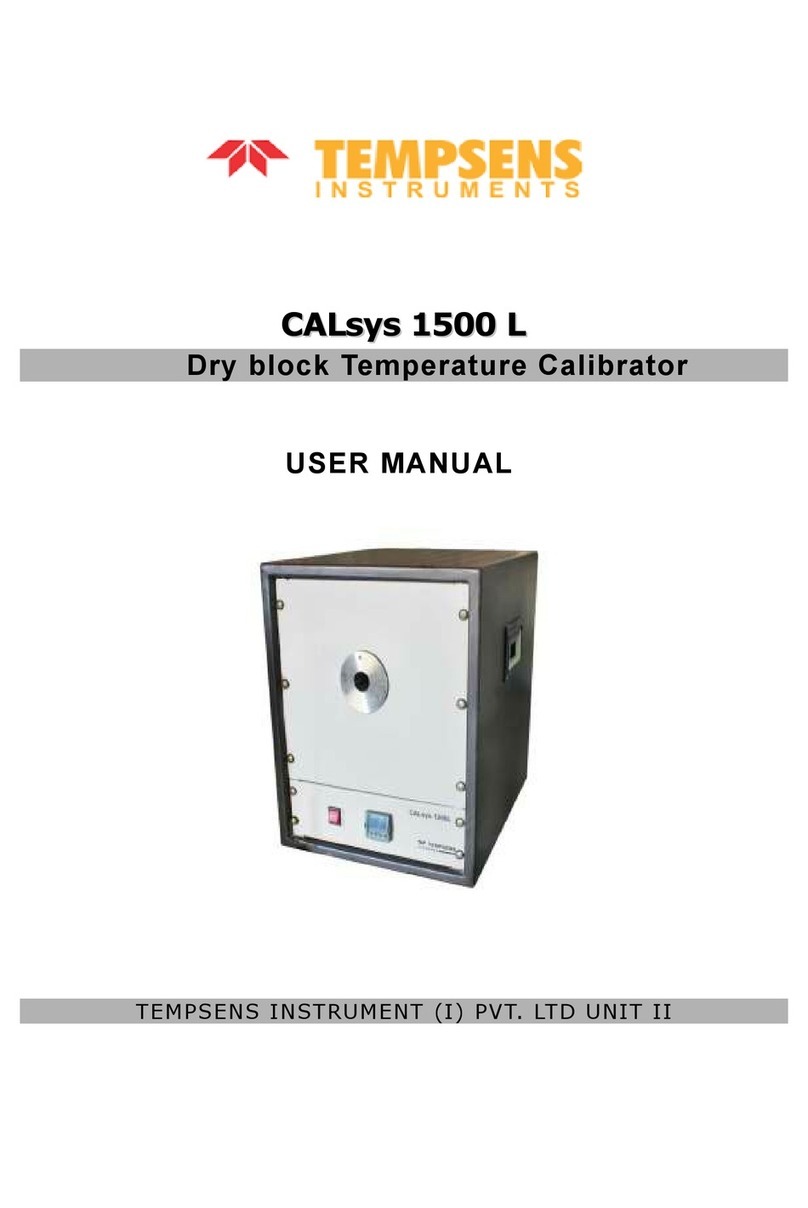
Tempsens
Tempsens CALsys 1500 L User manual

Tempsens
Tempsens CALsys 1200 User manual
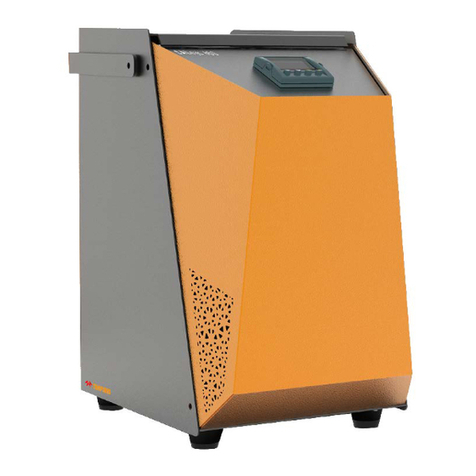
Tempsens
Tempsens CALSYS 650 User manual
